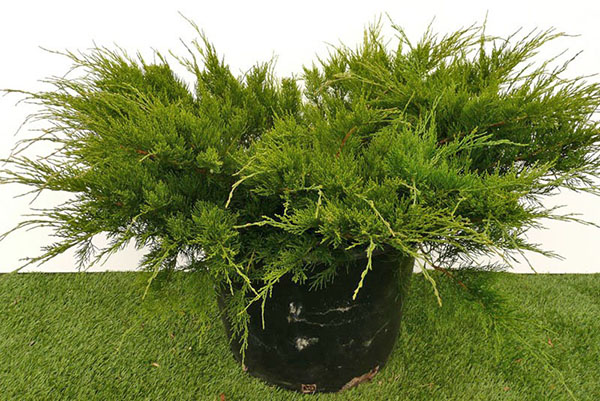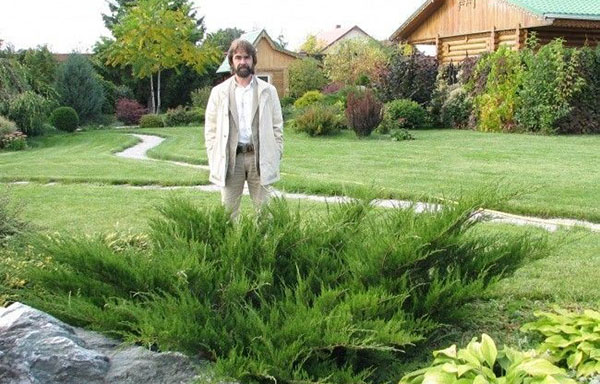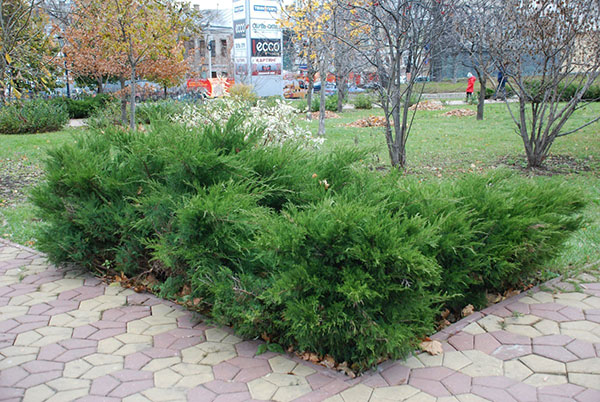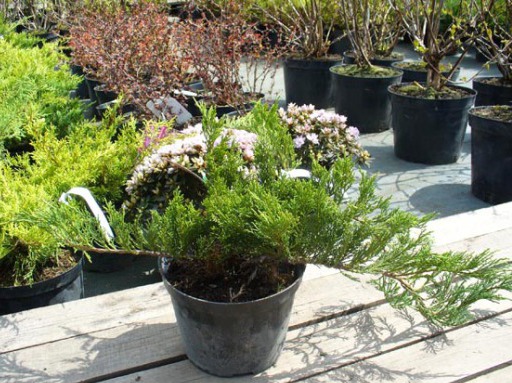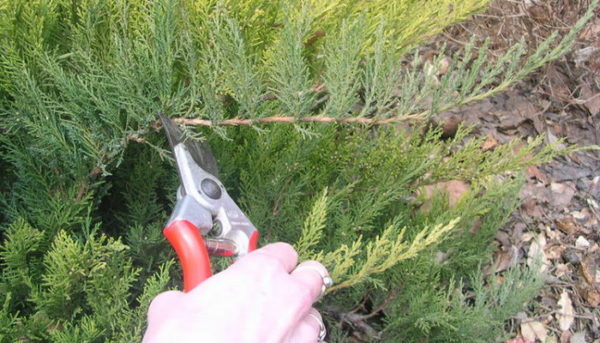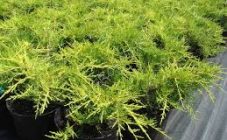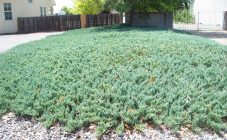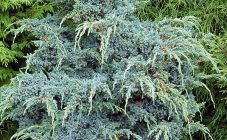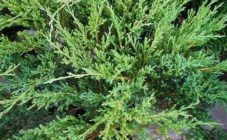Content:
Among the low ornamental shrubs, the evergreen juniper Mint Julep stands out. This plant can purify even the most polluted air. It grows well both outside the city and in megalopolises and near industrial enterprises. Culture is not afraid of harsh winters. Juniper mint julep is successfully used in landscape design. But it's worth knowing that this is a hybrid variety, and it is poisonous.
Characteristics of culture
Juniper (heather or juniper) is a genus of shrubs, semi-shrubs and trees. The culture represents the Cypress family. All types and varieties of heather are evergreen and coniferous. They perfectly clean the air, kill pathogenic bacteria. In the old days, this plant symbolized life long in eternity.
Veres is found in many countries located in the northern hemisphere of the planet. Low-growing species grow in the highlands of America and Eurasia. Juniper trees have chosen the forests of Asia and the Mediterranean. They are also common in the United States.
The genus is divided into male and female specimens. Male shrubs are the most dense. You can determine gender by color. In May, flowers appear on the heather. They are light green or green in color on female representatives and sunny on male ones. Fruits ripen in autumn. They look like round little bumps. The fruits are not eaten. However, natural paints are made from them.
The plant is useful. Scaly leaves and cones are used to prepare medicines. Such medicines help with various pains, problems with the urinary system and intestines. The production of canes and pencils has been established from wood.
A distinctive feature of some varieties of heather is a trunk that can take the shape offered to it. This feature allows the plant to be used to decorate landscaping. Green curvy compositions are created from such crops. Junipers with flexible stems include the Mint Julep variety.
Description of the variety
The full name of the variety is juniperus pfitzeriana mint julep juniper. By studying Latin, you can find out what the translation of the phrase says about a mint sweet cocktail. The description of the variety contains information about the persistent mint smell of dense needles.
The variety was developed in the United States in the middle of the last century. It's a hybrid. A Chinese species, as well as a poisonous Cossack species, participated in the creation of a new generation plant. The result is a juniper medium Mint Julep. He took the best qualities from his parents, so his characteristic consists practically of some positive features. Among which:
- The dense scaly needles have an emerald, deep dark green or light emerald color.
- The cones are glaucous or slightly bluish. They look very decorative on the emerald crown.
- The trunk and branches are capable of bending in any direction. The variety is suitable for constructing frame figures from a shrub.
- In the normal state, the shoots are in the shape of an arc, the ends are slightly lowered.
- An adult shrub hangs above the ground at a level of 2-3.2 m. The average juniper Mint Julep does not stretch, like Chinese varieties, by 20 meters. But it also does not live near the earth, like its Cossack brothers, which have meter-long creeping trunks.
- Growth, relative to other species, is quite fast. By the age of 10, the height of the shrub reaches 1.5-2 meters. Its needles grow by this age by 2.7-3.2 meters in diameter.
- The winter hardiness of the hybrid is high. An adult Veres does not need shelter for the winter. It can calmly endure severe winters with 40-degree frosts.
- Juniper Julep is resistant to bad ecology. It develops without problems in a gas-polluted area. In America, this particular variety is used to decorate city streets.
- Not picky about the soil. The acidity level can be either low or high.
- Veres mint julep can withstand droughts, temperature changes.
Landing
A place
Despite its unpretentiousness, the culture will grow best in areas where the sun's rays fall. In this case, the crown will be dense and attractive. In a shaded place, the Mint juniper will acquire loose needles.
A hybrid needs a lot of free space. It is recommended to select a free area for it. The distance to neighboring heather bushes or other crops should be at least 1.5-2.5 m.
Another condition for site selection is the absence of groundwater, which runs close to the soil surface.
Reproduction
Despite the fact that the plant is dioecious and has seeds, the seed propagation method of the juniper is extremely rare. The most effective and simple method used by experienced gardeners is cuttings. The shoot can be cut from early spring to late autumn. The size of the cutting should be at least 8-15 cm. The branch is rooted in a pot with a moist soil mixture, in which there is enough peat and humus. After that, an impromptu greenhouse is made. A bag is thrown over the container with the handle, which is fixed. If the pots are on the street, then at night they are brought into the house or covered with a warm cape.
Landing time
The time for planting a seedling is chosen by the gardener. But it is best to carry out the procedure after the snow melts. At this time, the soil is sufficiently moist.
The soil
Despite the unpretentiousness of the shrub, the best indicators for growth and strong immunity are observed on fertile loose soil. It is best to prepare a sandy peat substrate by adding turf. The pH should be around 5.5, which corresponds to a slightly acidic earth.
Planting instructions
- A landing pit is being prepared. Its size should be several times the size of the root system of the seedling. The approximate depth should be 50-70 cm, width - 60 cm.
- A 10-centimeter drainage layer is laid out on the bottom. Broken bricks, expanded clay, stones, gravel, coarse sand will do.
- It is better to purchase a seedling with a closed root system. Such plants are more resistant.
- When planting in a hole, the roots are slightly straightened, and after that they are sprinkled with loose soil.
- The root collar is placed in such a way that it is not buried, but also does not protrude much from the ground. It is optimal to leave it at the level of the edge of the planting pit.
- Planting ends with abundant watering of the plant and mulching of the trunk circle. You can take any mulch: from chips, sawdust, pine bark to hay and grass.
Care
Juniper Mint Julep is a hybrid variety that is not demanding for detailed care. In order for the plant to be healthy and give a visible annual growth, simple actions should be performed, including:
- Watering;
- Top dressing;
- Pruning;
- Protection of young plants from sun and frost.
Watering
The hybrid is responsive to moisture. It is recommended to water the heather once every 7-9 days. For this, two 10-liter buckets of settled water are suitable. Once every 3-5 days in the evening, the bush is sprayed with a spray bottle or the crown is sprinkled.
Top dressing
The plant is fertilized once a year. The procedure takes place in the spring. It is recommended to close up mineral complex mixtures under the bush, which must contain phosphorus and other useful elements. It is allowed to start feeding in the second year after planting. An adult bush is fertilized once every 2-3 years.
Pruning
Trimming is performed as needed. The grower removes dried, damaged shoots. A bush that is over 6 years old can be cut into a geometric shape or a topiary sculpture.
Protection of young plants
Immediately after planting, the Mint Julep should receive care, which consists in protection from direct sunlight. For this, a small fence is placed next to the plant. In autumn, the juniper is mulched with peat and covered with spruce branches. Only in this way a young plant will not suffer in case of frost.
Diseases and pests
Juniper hybrid medium Mint Julep has excellent immunity. However, occasionally he can pick up rust. This happens if apple trees, pears grow nearby. In this case, the branches that have acquired a brick color and began to dry out are removed and burned. If the bush is badly damaged, then it is sprayed with Arcerid, Metaxil, Karbofos.
Insects that interfere with the development of heather are aphids, scale insects, sawflies. They are effectively fought with the drugs Decis, Benzophosphate, Fitoverm. Among the folk remedies are dusting with ash, spraying with an ash solution with the addition of laundry soap or infusion of hot pepper, as well as infusion of garlic.
Landscape design
Juniper Mint Julep will decorate any garden. From its bending stems, you can construct a figured composition in the form of a spiral, an arch. The luxurious crown of an adult plant lends itself to decorative pruning. The hybrid produces attractive green sculptures.
Experienced designers know that Julep is a good neighbor for pine trees and other varieties of heather. Therefore, the hybrid is planted in compositions with other conifers and shrubs.
If there is a pond or a mini-waterfall in the garden, then Mint Julep will perfectly fit into the picture next to a water source. In this case, stone embankments will become companions for the juniper.
Spectacular juniper Mint Juleps will decorate any territory. For example, a garden, vegetable garden or front garden in front of the house. At the same time, he needs very little for normal growth. The culture is unpretentious. The main thing is to water the heather, prune it as necessary and fertilize it once a year.
